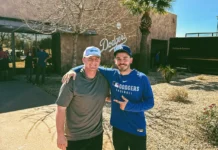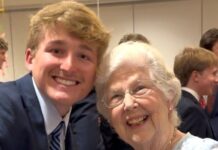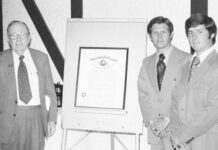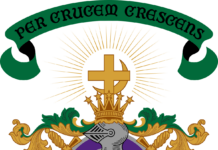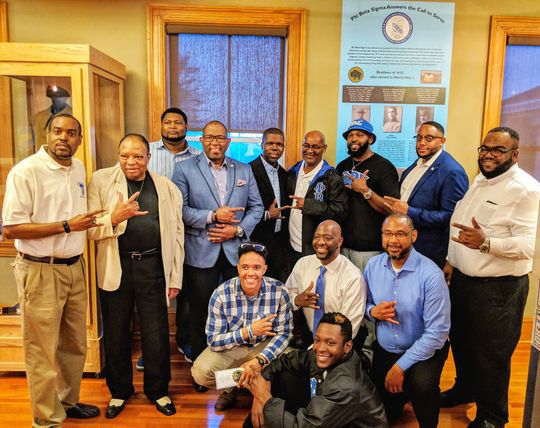DES MOINES, Iowa — Over a century ago, the first African-American officers trained at Fort Des Moines. On May 4, local members of Phi Beta Sigma Fraternity unveiled a display honoring members who received their commissions there in 1917 and served during World War I.
The Fort Des Moines training camp was first and only established for African-American officers and non-commissioned candidates.
What began as a question from Matt Harvey, president of the Fort Des Moines Museum and Education Center committee — “Did Phi Beta Sigma have any members who were commissioned here” — turned into a three-year project that uncovered 20 men from the fraternity who served in WWI, including nine who received their commissions at Fort Des Moines.
The display highlights Howard Donovan Queen who achieved the rank of colonel and led the Harlem Hell Fighters; Milton T. Dean who achieved rank of major, the third highest ranking African-American at the time, who was known as a talented officer and leader in combat; and Thomas Montgomery Gregory, who was commissioned as a lieutenant and played an integral role in getting blacks admitted in the Army’s Officer Candidate Schools and ensuring that they had black leadership.
Other fraternity members who received their commissions are Fort Des Moines include: Captain Charles C. Dawson, and Victor Julius Tulane.
There were over 25 guests in attendance to witness the unveiling, which included retired U.S. Navy Commander Zoe Dunning.
“This is where it all started, where first African-American officers were trained and fought for the rights to serve our country, and where they went forward to France to fight in their units,” Dunning said. “Many people do not know this started all here in Iowa. It’s an honor to come here to witness. I encourage more people to come here and discover more about the role the 92nd Regiment played in World War I, and the role Fort Des Moines played in it.”
Like many people, when taking on this project, I was unaware of the fort and its role in shaping the historical significance that African-Americans played not just in Iowa but to the United States Armed Forces.
“Fort Des Moines is evidence that some in the U.S. Army were able to see beyond the stereotypes 100 years ago and the stories now shared here reveal the wisdom of enabling African-American service,” said Tim Lane, co-chair of the Iowa World War I Committee. “Those officers and their men offer a legacy that is both deep and rich.”
A story like this required the assistance of Jack Lufkin former curator for the museum, and several members of the Phi Beta Sigma historical team. Over 2,400 photos were reviewed at the National Archives and cross referenced with the list of the 639 commissioned officers.
With the unveiling, Phi Beta Sigma became the fourth Black Greek Letter Organization to honor members who served admirably in WWI. The Great Lakes Region sponsored the display.
Phi Beta Sigma was founded at Howard University in Washington, D.C., in 1914. It has blossomed into an international organization of leaders with more than 290,000 members.



